Étiquette : Bande/Tape
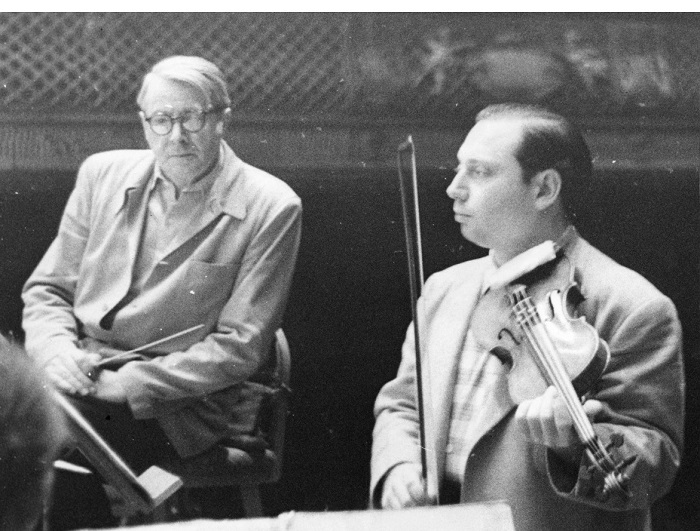
Berg Violinkonzert – Isaac Stern Charles Munch Boston Symphony Orchestra (BSO)
Boston Symphony Hall – November 6, 1959
Source Bande/Tape: STEREO 19cm/s 2 pistes /7.5ips 2tracks
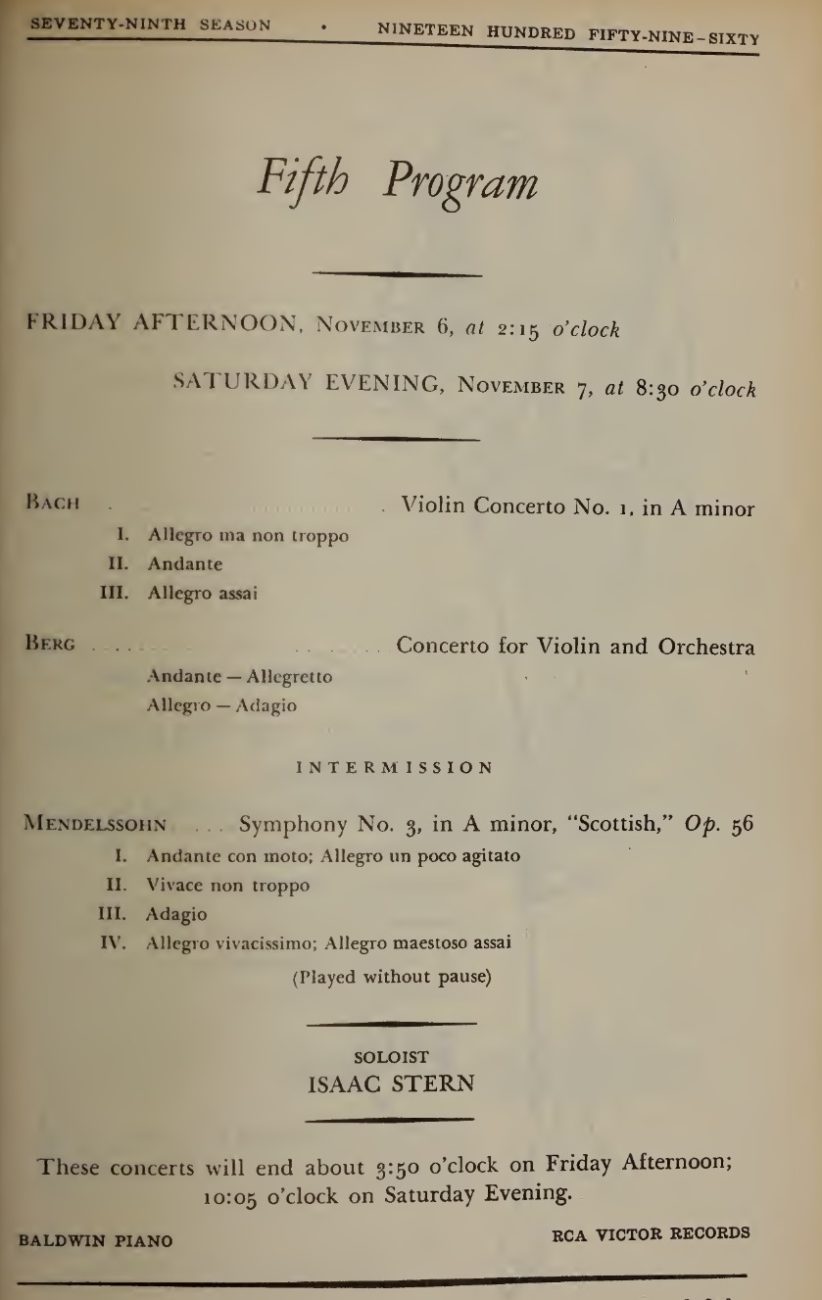
En ce qui concerne la musique du XXème siècle, Charles Munch est particulièrement connu comme interprète de Debussy, Dutilleux, Honegger, Martinu, Milhaud, Poulenc, Ravel et Roussel. Mais il a aussi à de rares occasions abordé le répertoire de la musique atonale (par exemple Stravinsky Agon) et plus particulièrement le Concerto pour violon d’Alban Berg dont il a dirigé la première en France avec Louis Krasner et l’Orchestre de la Société Philharmonique de Paris à la Salle Pleyel le 26 novembre 1936:
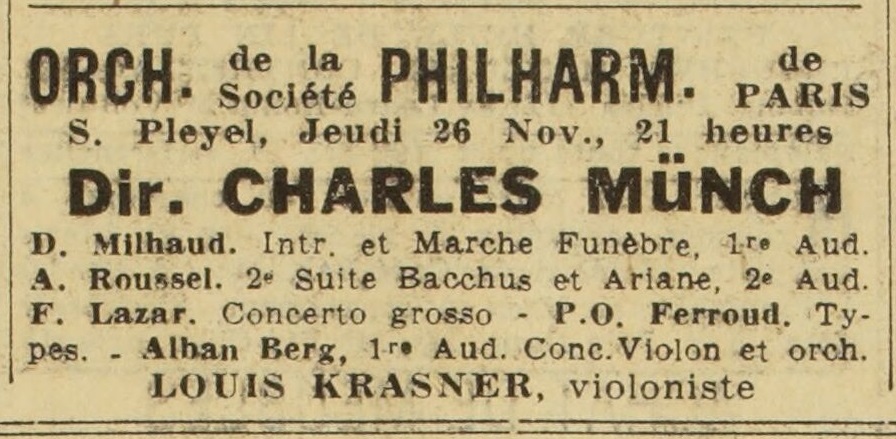
L’œuvre a été bien reçue par la critique. C’est ainsi que le chef d’orchestre, compositeur et organiste Gustave Bret (1875-1959) écrivait dans L’Intransigeant du 15 décembre 1936: «Le Concerto pour violon et orchestre d’Alban Berg mérite, entre toutes les œuvres nouvelles, une particulière attention. Car, si étrangement hostile que se manifeste au premier contact, et même au second, cette musique, elle garde ce caractère de ne pas être antipathique. Elle révèle tout d’abord la main d’un compositeur qui a une connaissance approfondie de son art. Elle nous heurte par ses fausses notes, ou du moins par ce que, à l’époque actuelle, nous jugeons telles. Mais elle s’illumine de je ne sais quel enthousiasme dont l’expression, encore que pénible et terriblement inquiète, vient jusqu’à nous. Cette œuvre se différencie nettement par là, de tant de productions dont la laideur est la seule originalité et qui dissimulent sous un masque féroce, une indigente simplicité». Le compositeur Jacques Ibert (1890-1962) écrivait quant à lui le 16 décembre 1936 dans Marianne à propos du ‘beau concert’ de Charles Münch: « La musique de Berg n’est pas de celles qui livrent du premier coup leurs secrets. Le langage assez complexe et le système d’écriture du maître viennois demeureront toujours un peu mystérieux pour une oreille non exercée. Néanmoins, on peut admirer dans ce Concerto l’originalité d’un tempérament avant tout lyrique, qui a su échapper à temps à l’influence de Schoenberg, mais qui, cependant, lui doit son orientation première. M. Krasner interpréta cet ouvrage avec une fougue et une habileté technique qui lui valurent un succès très mérité».
A Boston, Munch a redonné l’œuvre à une seule occasion, pour une série de quatre concerts les 6, 7, 8 et 10 novembre 1959 avec Isaac Stern. Fort heureusement, il nous en reste ce superbe enregistrement dans lequel Stern, porté par l’orchestre, donne le meilleur de lui-même.
____________
As far as 20th century music is concerned, Charles Munch is especially known as a performer of works by Debussy, Dutilleux, Honegger, Martinu, Milhaud, Poulenc, Ravel and Roussel. But he also occasionaly performed atonal music (e.g. Stravinsky Agon) and more particularly Alban Berg’s Violin Concerto, which he premiered in France with Louis Krasner and the ‘Orchestre de la Société Philharmonique de Paris’ at the Salle Pleyel on November 26, 1936:

The work was well received by the critics. Indeed, conductor, composer and organist Gustave Bret (1875-1959) wrote in ‘L’Intransigeant’ on December 15, 1936: «The Concerto for violin and orchestra by Alban Berg deserves, among all the new works, special attention. Because, so strangely hostile this music appears at the first and even at the second contact, it keeps this property of not being antipathetic. It reveals in the first place the hand of a composer who has a deep knowledge of his art. It offends us by its wrong notes, or at least what nowadays we consider as such. But it lights up by I don’t know what enthousiasm whose expression, although painful and terribly anxious, reaches us. In this, this work differs markedly from so many productions whose ugliness is the only originality and hide under a ferocious mask, an indigent simplicity». Composer Jacques Ibert (1890-1962) wrote on December, 16 in ‘Marianne’ about Charles Münch’s ‘beautiful concert’: « The music by Berg is not among those that reveal their secrets at first hearing. The rather complex musical langage and the writing system of the Viennese will always remain somewhat mysterious for an untrained hear. However, one may admire in this Concerto the originality of a temperament above all lyrical, who knew how to escape Schoenberg’s influence in the nick of time, but who however ows him his first trend. M. Krasner performed this work with a passion and a technical skill which earned im a well-deserved success».
In Boston, Munch performed the work on only one occasion, for a series of four concerts on November 6, 7, 8 and 10, 1959 with Isaac Stern. Happily, this superb recording has been preserved, in which Stern, with the support of the orchestra, gives his best.
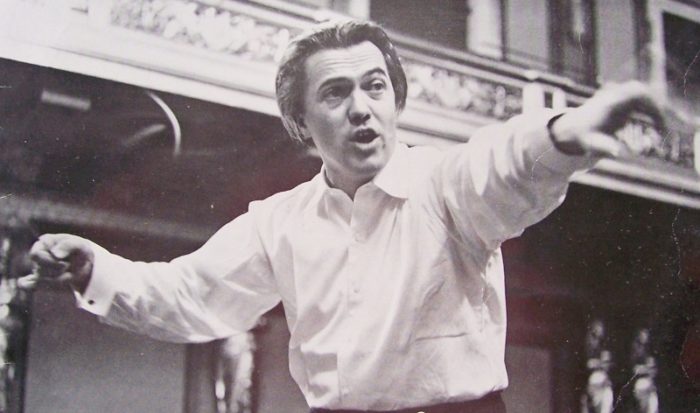
Karl Münchinger Wiener Philharmoniker (WPO)
Wien Sofiensaal: 2-7 mai 1957
Prod: John Culshaw – Eng: James Brown
Source Bande/Tape LCL 80017 (4 pistes 19cm/s / 4 tracks 7.5 ips)
Voici deux symphonies de Haydn parmi les plus connues, que nous offrent les Wiener Philharmoniker à leur sommet sous la baguette de Münchinger, toujours pertinent dans ce répertoire.
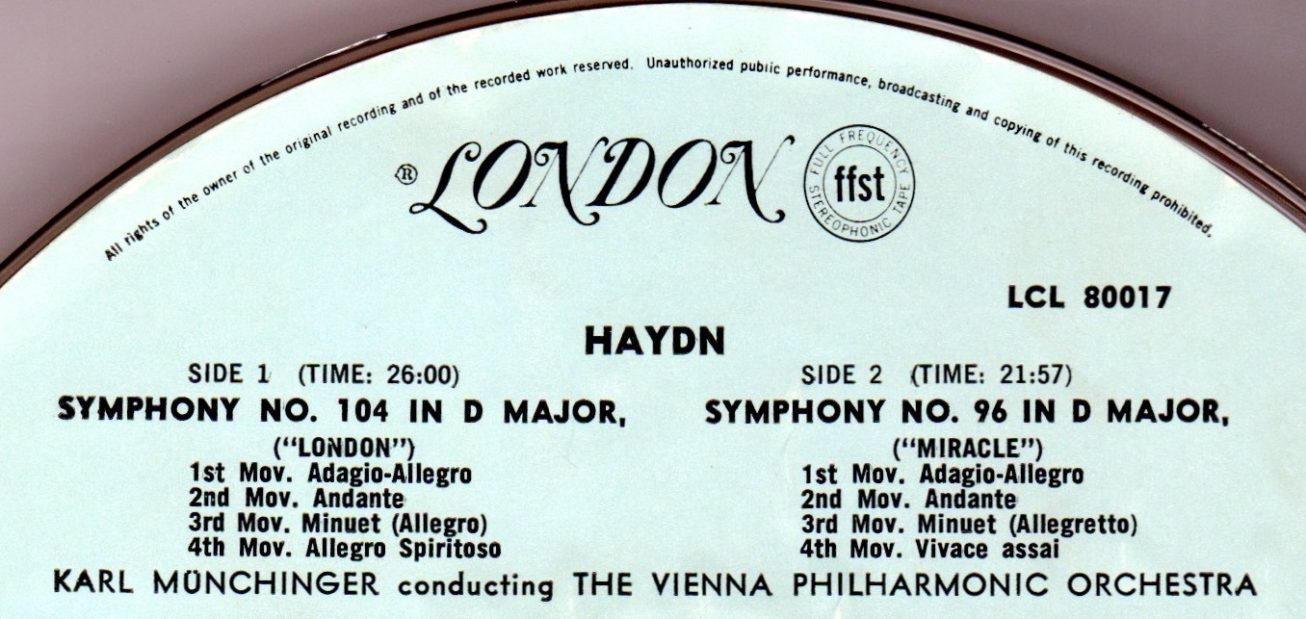
Here are two of the most celebrated Haydn symphonies, performed by the Wiener Philharmoniker in top form, under the direction of Karl Münchinger, always relevant in this repertoire.
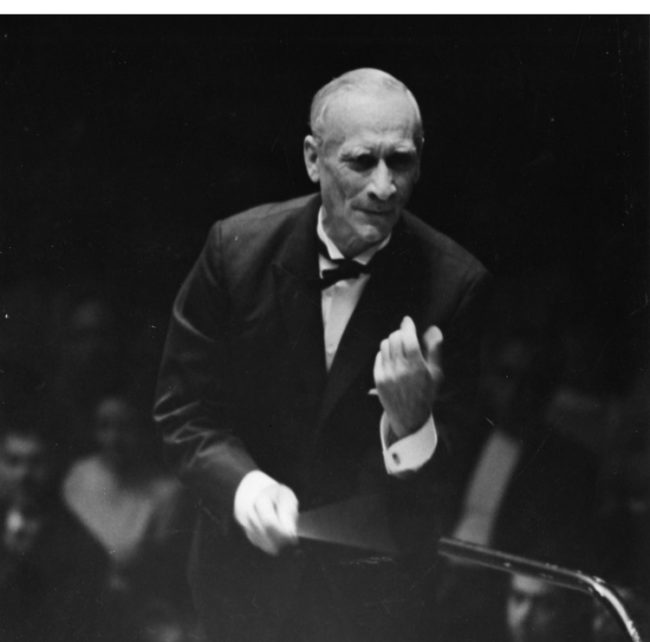
Karel Ančerl – Boston Symphony Orchestra (BSO)
Smetana Ma Vlast IV: Z českých luhů a hájů (Des forêts et prairies de Bohême – From Bohemia’s fields and woods), V: Tábor, VI: Blanik
Berkshire Festival – Tanglewood Shed August 8, 1969
Source: Bande/Tape 19 cm/s / 7.5 ips
Suite à plusieurs demandes, voici la deuxième partie du concert de 1969 consacré à la première audition intégrale par le BSO du cycle Ma Vlast de Smetana.
Peu après le debut de cette deuxième partie, un violent orage a éclaté sur les monts Berkshire et on peut malheureusement l’entendre à plusieurs reprises sur des durées assez longues, seule l’audition de Tábor restant relativement épargnée.
Le concert n’en a pas moins été un grand succès, comme le montrent les applaudissements et les nombreux rappels à la fin, ainsi que les spectateurs tapant des pieds, qui ajoutent au bruit du tonnerre comme le remarque par un trait d’ humour le présentateur William Pierce.
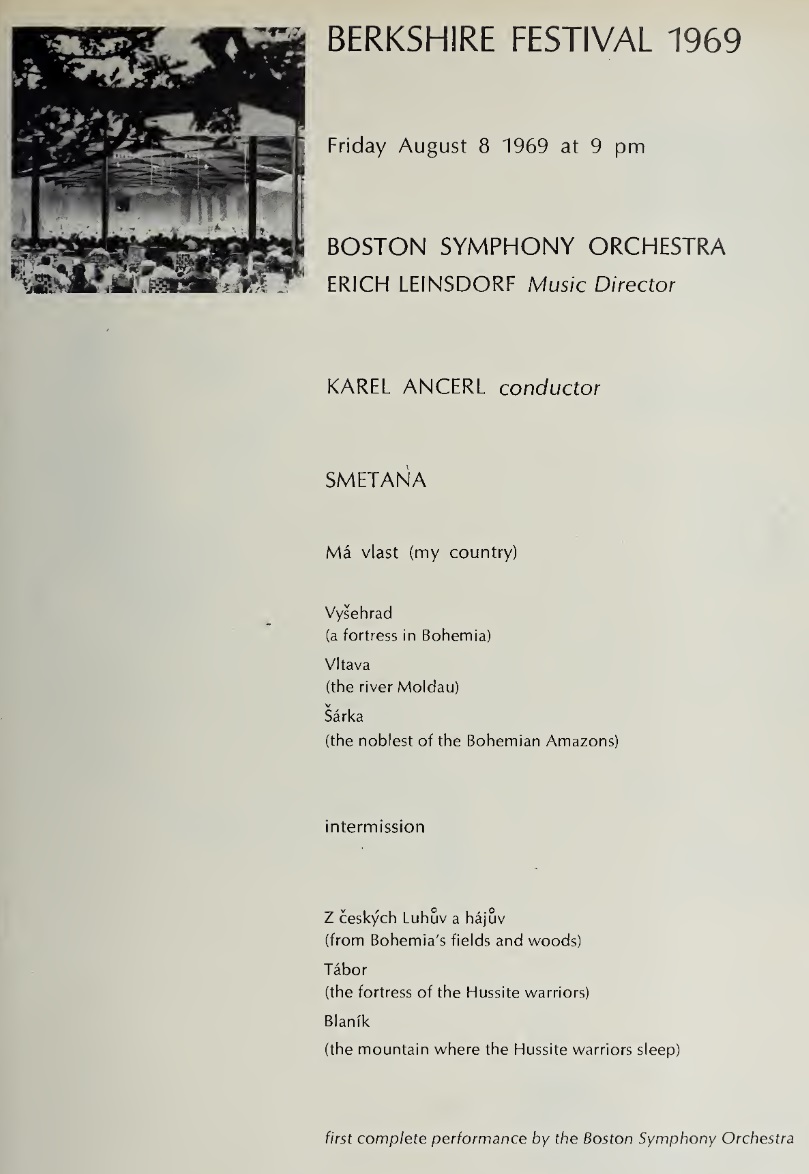
Further to several requests, here is the second part of the 1969 concert dedicated to the first complete performance by the BSO of Smetana’s cycle Ma Vlast.
Shortly after the beginning of this second part, a violent thunderstorm started over the Berkshires and unfortunately, it can be heard over several rather long stretches of time, only the listening of Tábor remaining relatively spared.
The concert was nevertheless a great success, as shown by the applause and the many recalls at the end, as well as the public foot bumping, described with tongue-in-cheek humor by announcer William Pierce as adding to the thunder.
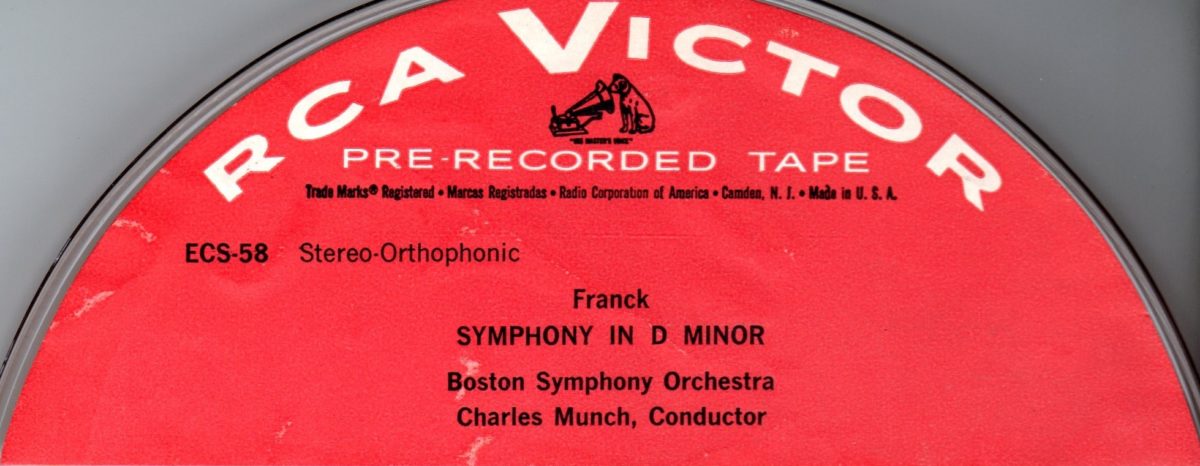
I: Lento-Allegro non troppo – II: Allegretto – III: Allegro non troppo
Charles Munch – Boston Symphony Orchestra
Symphony Hall – March 11, 1957
Source: Bande 2 pistes /2-track Tape: RCA ECS-58
Charles Munch était le chef de l’inspiration spontanée: il y avait beaucoup de différences entre ses interprétations d’une même œuvre. Par contre, la passion qu’il mettait dans ses concerts ne se retrouvait qu’en partie dans ses disques, souvent considérés comme moins satisfaisants.
Sa personnalité le conduisait également à des exagérations enthousiasmantes en concert, mais parfois discutables à l’audition des enregistrements publics. C’est le cas de la Symphonie de Franck, pour laquelle on dispose d’une bande captée en concert le 9 mars 1957, soit deux jours avant l’enregistrement officiel (coffret «Charles Munch conducts A Treasury of French Music» 6CD WHRA-6027). En public, Munch pousse de manière spectaculaire les contrastes de tempi et de dynamique avec pour résultat paradoxal des minutages beaucoup plus élevés*, alors que l’enregistrement de studio, tout en conservant la patte caractéristique de Munch et son inspiration, serait à choisir de préférence.
L’année 1957 voit chez RCA une amélioration de la prise de son stéréophonique, avec l’utilisation de trois microphones (gauche, droite et centre) et d’une bande magnétique trois pistes. Pour une écoute à deux canaux, les signaux des micro de gauche et de droite sont affectés à chacun des canaux respectifs comme pour une stéréo normale, et le signal du micro central est ajouté aux deux canaux. Cette technique, qui sera également adoptée sous peu par Columbia permet d’améliorer la définition ainsi que la répartition spatiale pour une écoute plus proche du concert. Elle est décrite en détail par Bert Whyte dans sa recension de cette bande ECS-58 dans «Hi-fi & Music Review» de février 1958 (page 91). Pour la lire , cliquer ICI.
*Concert: I: 18’; II: 9’53; III:10’28 – Enregistrement RCA: I: 16’55; II: 9’23; III: 10’10
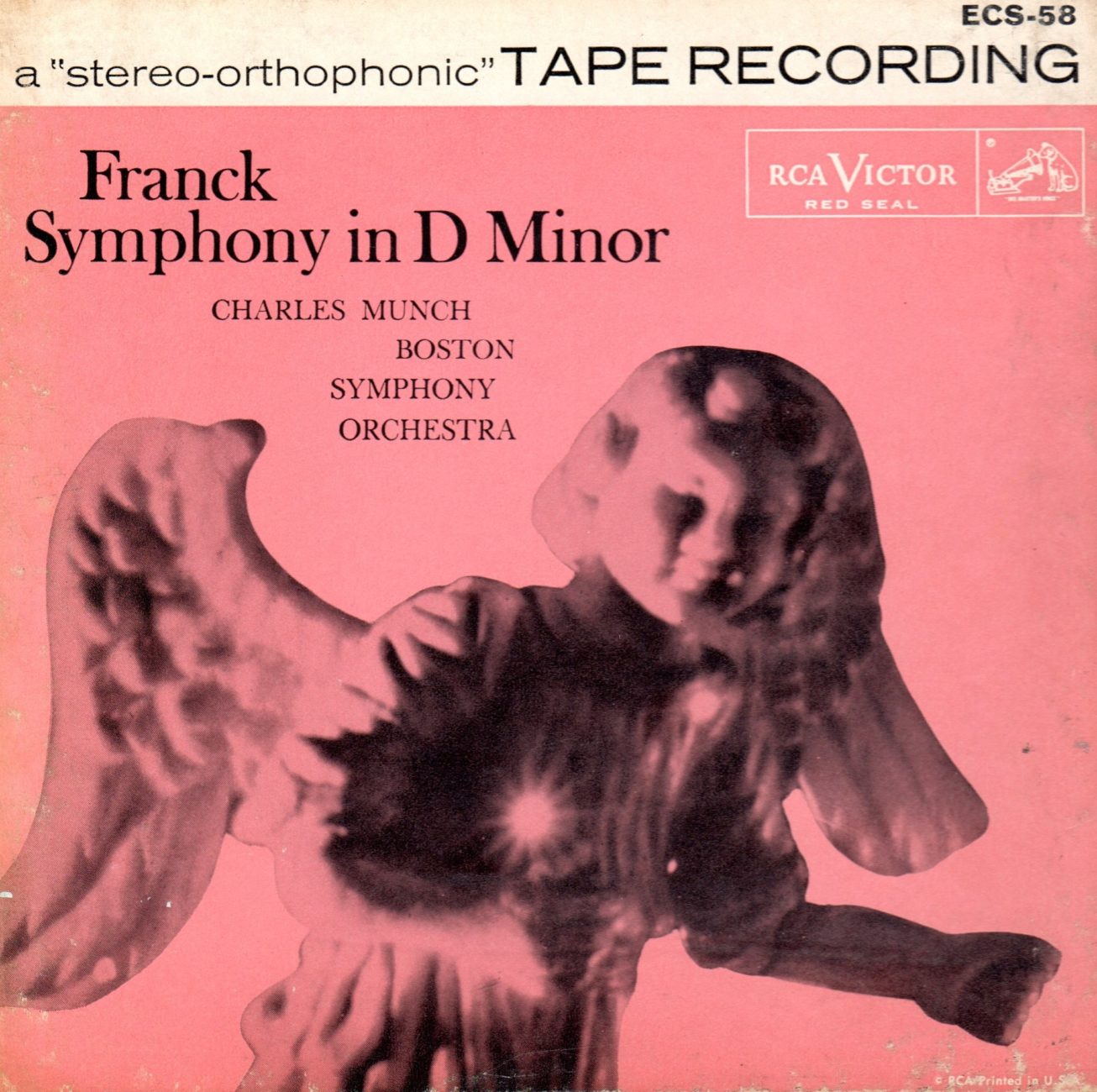
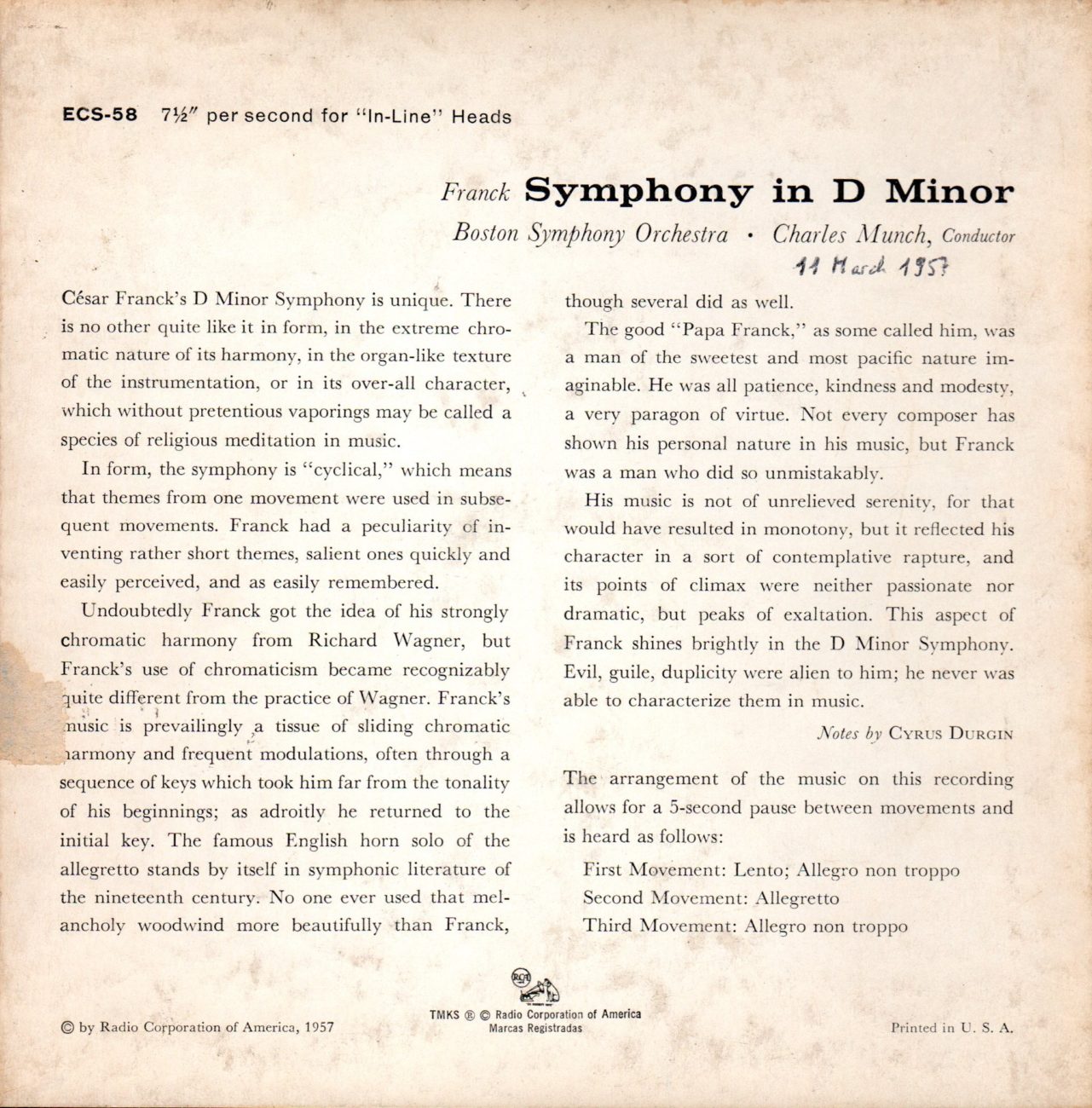
Charles Munch was the conductor for spontaneous inspiration: he would give many different interpretations of a same work. On the other hand, the passion in his concerts was only partly to be found in his commercial discs, often considered as less satisfactory.
His personality led him too to thrilling exaggerations in his concerts, but sometimes objectionable when listening to live recordings. It is the case with Franck’s Symphony, for which we have a concert tape recorded on March 9, 1957, namely two days before the official recording (in Boxset «Charles Munch conducts A Treasury of French Music» 6CD WHRA-6027). Live, Munch spectacularly pushes to the limit the contrasts of tempi and of dynamics, with the paradoxical result of much higher timings*, whereas the studio recording, while keeping the typical Munch’s touch and inspiration, would be a more obvious choice.
1957 brought an improvement to the RCA stereo recordings, with the use of three microphones (left, right and centre) and of a three-track tape. For two-channel reproduction, the signals of the left and right mikes are fed to the respective left and right channels as in normal stereo, and the signal of the central mike is added to both channels. This technique, which was soon to be used also by Columbia, allows to increase the definition and the spatial spreading for a listening that is closer to the concert. It is described in details by Bert Whyte in his review of this tape ECS-58 in «Hi-fi & Music Review» of February 1958 (page 91). To read it, please click HERE.
*Concert: I: 18’; II: 9’53; III:10’28 – RCA Recording: I: 16’55; II: 9’23; III: 10’10
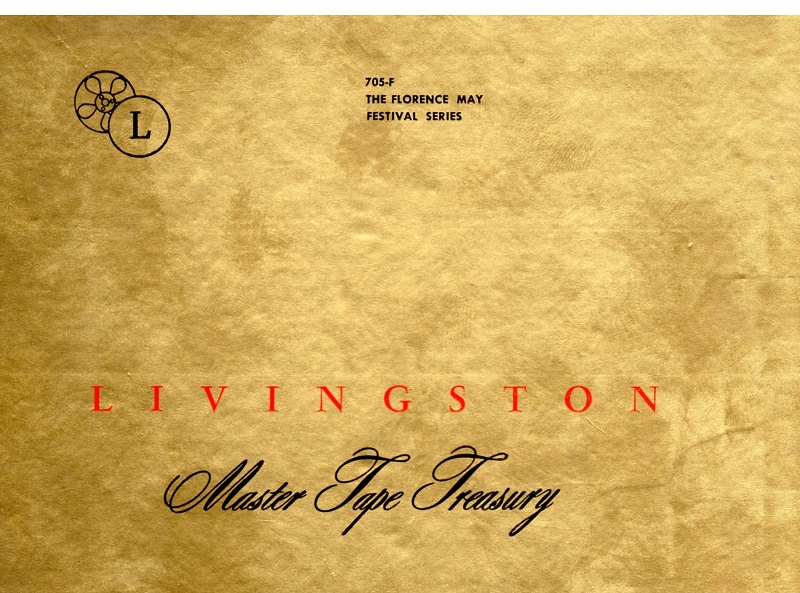
Vittorio Gui – Orchestra del Maggio Musicale Fiorentino
Schubert Symphonie n°8 D759
Rossini Guillaume Tell Ouverture
Brahms Akademische Festouvertüre Op.80
Massenet-Scènes Alsaciennes: n°3 Sous les Tilleuls
Enr/Rec: Teatro Comunale di Firenze – May – June 1953 Stereo
Source: Bande/Tape Audiosphere 701-BN & Livingston 705F
Le Mai Musical Florentin de 1953 (XVI Maggio Musicale Fiorentino) est resté célèbre en raison des représentations de la Medea de Cherubini avec Maria Callas sous la direction de Vittorio Gui.
Fait moins connu, au cours de ce Festival, ont été réalisés les premiers enregistrements stéréophoniques commerciaux en Europe, sous la direction de Vittorio Gui, pour le label américain Livingston fondé par Ched Smiley.
Le directeur artistique de cette production était le chef Hans Wolf (Hamburg 1912- Seattle 2005). Il a étudié notamment avec Heinrich Schenker en 1933 et 1934 et a poursuivi ensuite des études à Vienne. Comme Marcel Prawy dont il était l‘ami, Il s’est engagé dans l’armée américaine en 1943, a obtenu la nationalité américaine et a été envoyé à Vienne au printemps 1945. Avant de s’installer aux Etats-Unis en 1952, il a fait des enregistrements pour le label Remington et un orchestre dénommé «Austrian Symphony Orchestra« (qui était en fait le Niederösterreichisches Tonkünstler Orchester) entre 1950 et février 1952, en tant que chef d’orchestre (Beethoven Symphonie n°5, Brahms Symphonie n°2, Franck Symphonie etc…). Il a également été producteur associé avec Marcel Prawy, pour les enregistrements avec Fritz Busch avec le même orchestre (Haydn Symphonie n°101, Beethoven Symphonies n°3 et 8) pour lesquels l’ingénieur du son était Hans Sachs de la Radio autrichienne RAVAG) et, fait notable avec Vittorio Gui (Mendelssohn: Symphonie n°5 et Ouverture «Les Hébrides», ainsi qu’un disque d’ouvertures).
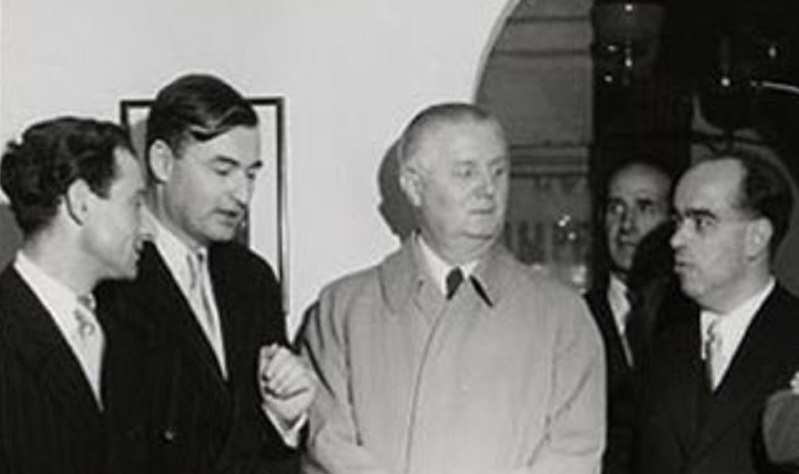
Hans Wolf – Marcel Prawy – Fritz Busch – Hans Sachs – Wien Oktober 1950
Par ailleurs, le label Livingston était à l’époque engagé dans des recherches de stéréophonie expérimentale, notamment avec le concept de disque à double sillon d’Emery Cook, pour lequel Livingston a commercialisé un bras de lecture « Binaural Arm »:
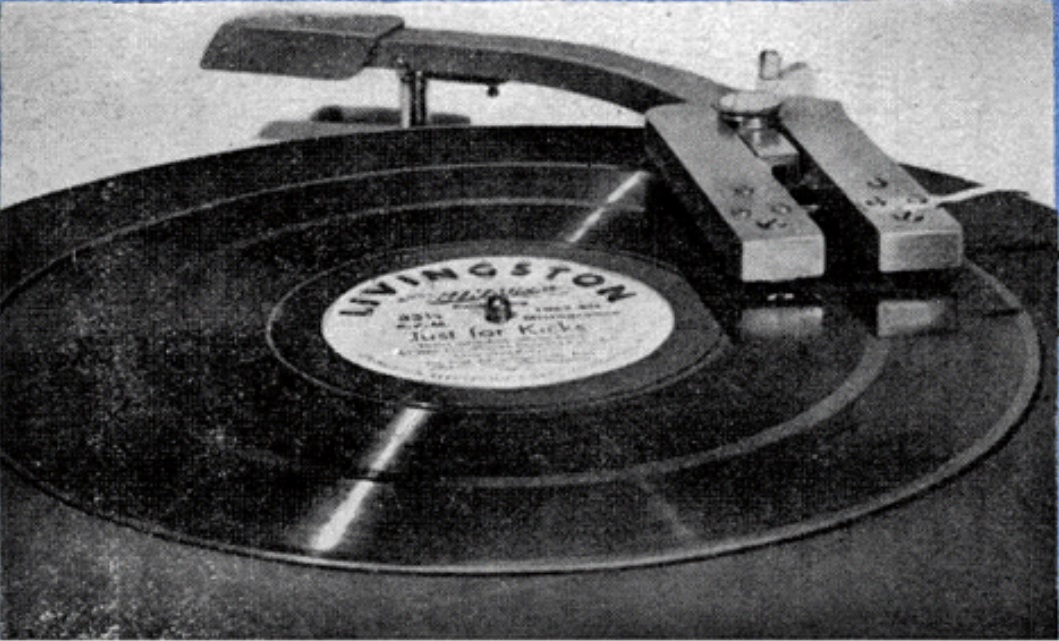
Livingston Binaural Arm
Le nouveau projet de Livingston qui a vu le jour en 1953 était la commercialisation en stéréophonie, sur bandes magnétiques, d’une importante série d’ enregistrements orchestraux faits à Florence sous la direction de Vitorio Gui au cours du Mai Musical Florentin qui a eu lieu entre le 7 mai et le 29 juin 1953. Livingston n’était pas le seul avec un tel projet, mais ses enregistrements orchestraux en stéréo ont précédé ceux d’ AV-Tapes Libraries (Sibelius: Cincinnati SO Thor Johnson enregistré en novembre 1953).
Cinq bandes magnétiques référencées 701 à 705 publiées par Livingston/Audiosphere ont été annoncées dans les numéros de juin et d’août 1954 de la revue Tape Recordings, après avoir fait l’objet au mois de mars d’une présentation au public à Cleveland (Cleveland Chapter 18th Symposium «Stereo Symposium») sous la forme d’émissions radiophoniques FM expérimentales en stéréo.
Lors des séances d’enregistrement à Florence, deux jours ont été consacrés à la mise en place des microphones et à la balance de l’orchestre, le montage des bandes a été réalisé sur place, et les enregistrements ont fait l’objet d’une écoute en vue de leur approbation.

Presentation (Tape Recordings: June 1954)
Dans un article intitulé «Tape makes it easier» paru dans le numéro d’avril 1955 de la Revue «Tape Recordings«, Hans Wolf a dévoilé sa conception personnelle des enregistrements sur bande magnétique et sur le montage, et il a raconté la visite d‘Heinrich Kralik, musicologue et Directeur du département musical de la Radio Autrichienne RAVAG, lors du montage des enregistrements de Vittorio Gui dans une petite salle du Teatro Comunale. Pour le lire, cliquer ICI.
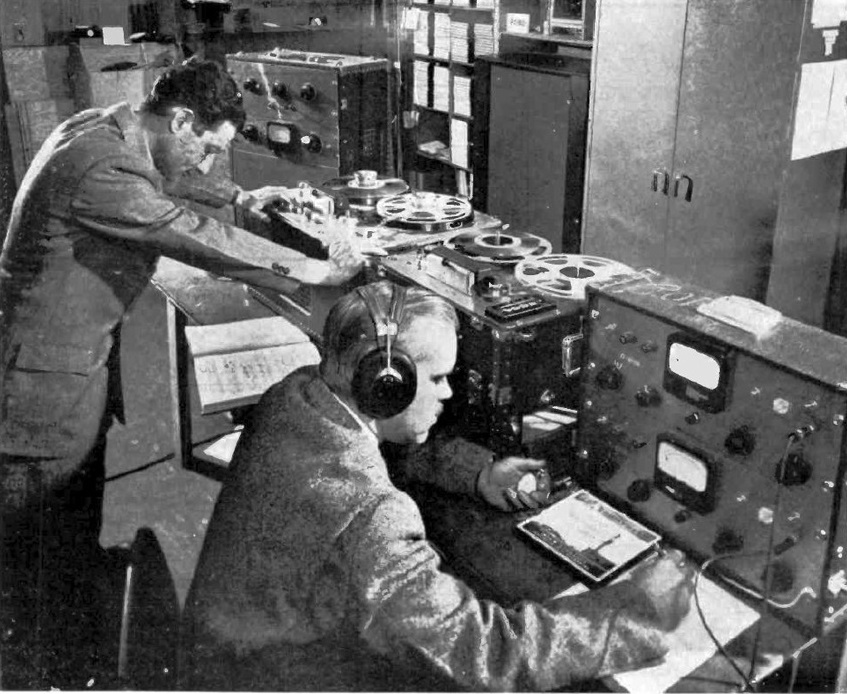
Hans Wolf & Ched Smiley
Les annonces de publications de bandes magnétiques stéréophoniques par de petites firmes (Livingston/Audiosphere et AV Tapes Library) ont créé une forte incitation pour les grands labels et en tout premier lieu RCA qui a annoncé dès juillet 1954 dans la revue High Fidelity sa première publication d’une bande magnétique en stéréo: Strauss Also sprach Zarathustra Chicago SO Fritz Reiner, enregistrement du 6 mars 1954.
Par la suite, les publications pionnières de Livingston sont progressivement tombées dans l’oubli jusqu’à la réédition en 2014 des enregistrements de Vittorio Gui sous le propre label du Festival «Historical Maggio Live» (2CD OF 003).
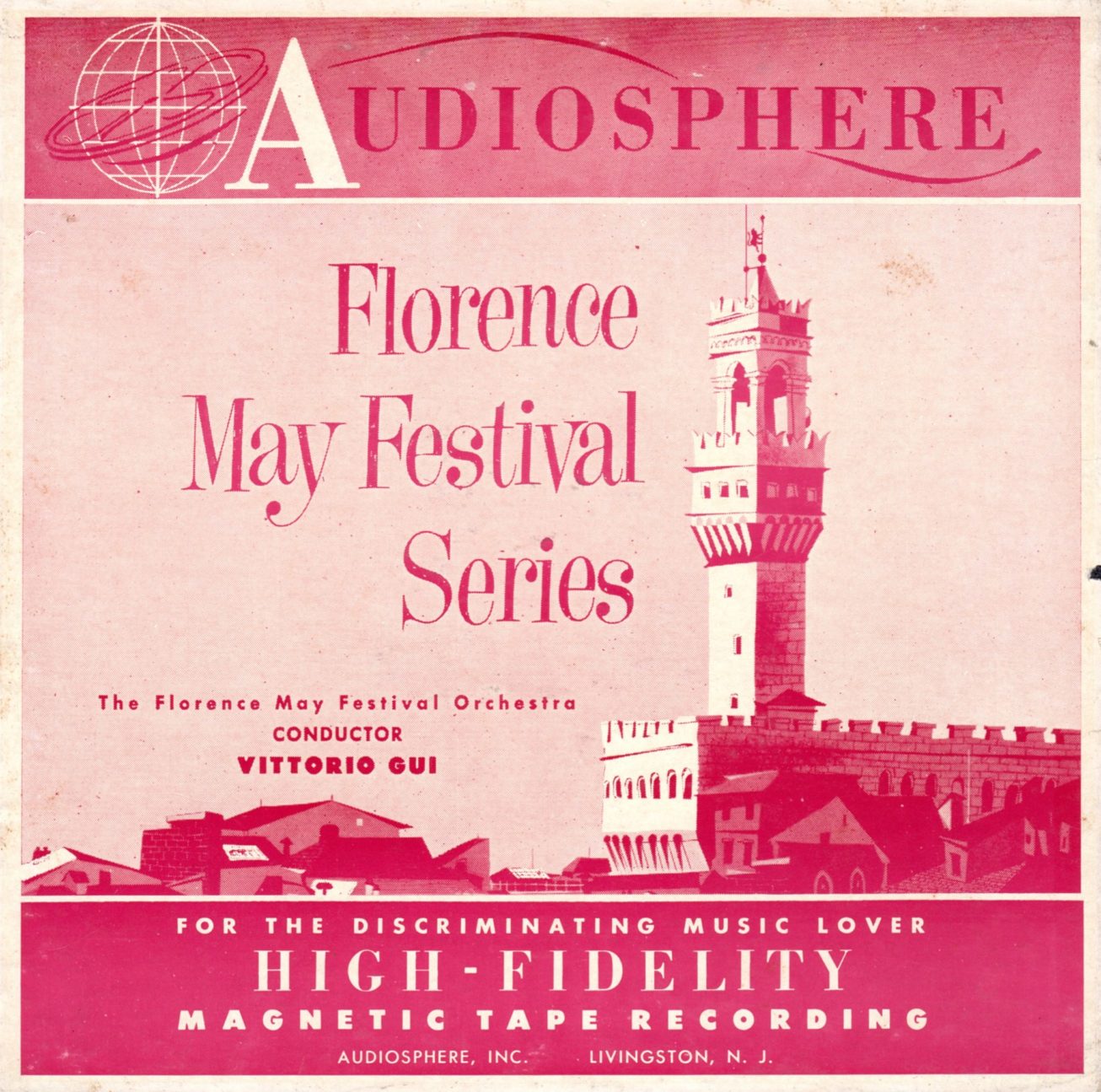
Bande /Tape Audiosphere BN701
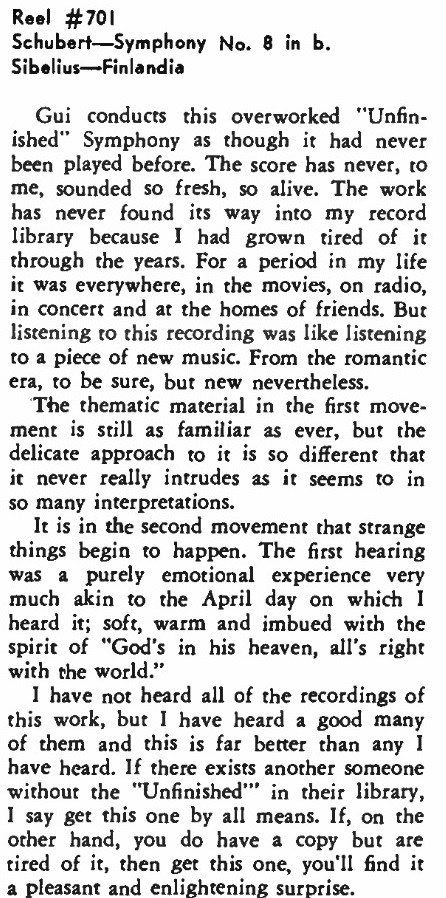

Bande /Tape Livingston 705-F
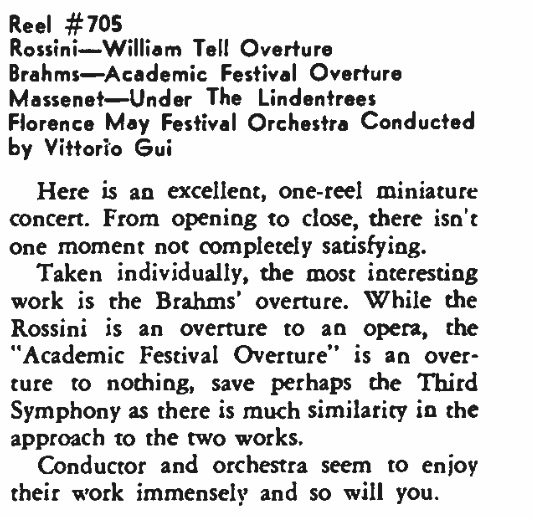
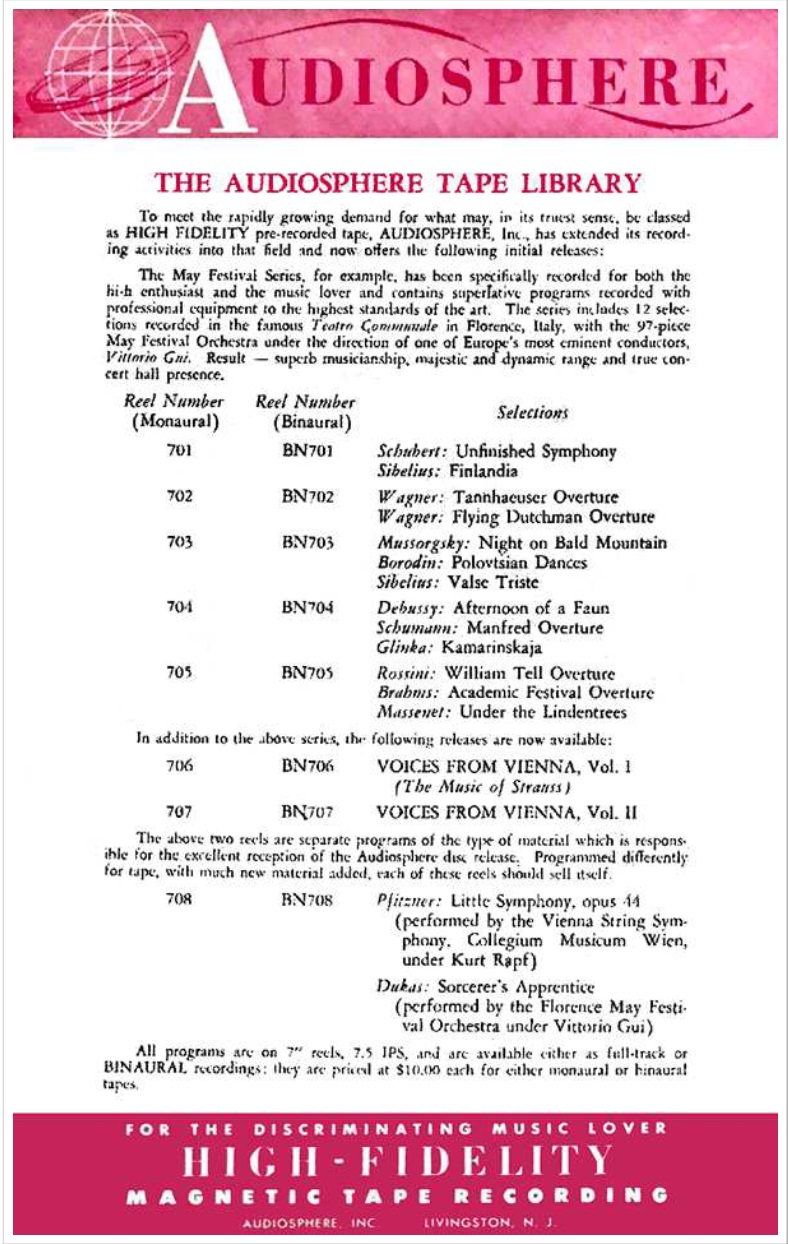
Audiosphere Catalog December 1954
The 1953 Florence May Festival (XVI Maggio Musicale Fiorentino) has remained memorable because of the performances of Cherubini’s Medea with Maria Callas conducted by Vittorio Gui.
But it is much lesser known that during this Festival, the first commercial stereophonic recordings in Europe were made with conductor Vittorio Gui, for the US Livingston label founded by Ched Smiley.
The musical producer was conductor Hans Wolf (Hamburg 1912- Seattle 2005). He studied among others with Heinrich Schenker in 1933 and 1934 and then further studied in Vienna. In the same way as Marcel Prawy who was his friend, he joined the US Army in 1943, became a US citizen and was sent to Vienna in the Spring of 1945. Before settling in the USA in 1952, he made recordings for the Remington label and the so-called «Austrian Symphony Orchestra « (which was in fact the Niederösterreichisches Tonkünstler Orchester) between 1950 and February 1952, as a conductor (Beethoven Symphonie n°5, Brahms Symphonie n°2, Franck Symphonie etc…). He was also the assisting producer to Marcel Prawy, for the recordings with Fritz Busch with the same orchestra (Haydn Symphony n°101, Beethoven Symphonies n°3 and 8) for which the recording engineer was Hans Sachs from the Austrian Radio (RAVAG) and, also worth noting, with Vittorio Gui (Mendelssohn: Symphony n°5 and Overture «Hebriden», as well as a LP comprised of overtures).
On the other hand, the Livingston label was then involved in research in experimental stereophony, especially with Emery Cook’s double groove LP concept, for which Livingston sold a tone arm called « Binaural Arm »:
The new Livingston concept that materialized in 1953 was the commercialization on stereophonic magnetic tapes of an important series of recordings made in Florence under the direction of Vitorio Gui during the May Festival which took place between May 7 and June 29, 1953. Livingston was not the only one with such an idea, but its stereo orchestral recordings were made before those of AV-Tapes Libraries (Sibelius: Cincinnati SO Thor Johnson recorded November 1953).
Five magnetic tapes (Ref: 701 to 705) issued by Livingston/Audiosphere have been announced in the June and August 1954 issues of the review Tape Recordings, just after having been presented to the public in March in Cleveland (Cleveland Chapter 18th Symposium «Stereo Symposium») as experimental stereo FM broadcasts.
Two days of the recording sessions in Florence were used just balancing the orchestra and the tapes were edited and played back on the spot for approval .
In an article titled «Tape makes it easier» published in the April 1955 issue of the review «Tape Recordings«, Hans Wolf unveiled his personal ideas as to recording on magnetic tape and on editing, and he described the unexpected visit of Heinrich Kralik, musicologist and Director of the music department of the Austrian Radio RAVAG, during the editing of Vittorio Gui’s recordings in a small room of the Teatro Comunale. To read it, please click HERE.
The advertised publications of stereophonic magnetic papes by small labels (Livingston/Auduiosphere and AV Tapes Library) generated a strong incentive for the big record companies and in the first place RCA which advertised as early as July 1954 in the review High Fidelity the publication of its first stereo tape: Strauss Also sprach Zarathustra Chicago SO Fritz Reiner, recorded March 6, 1954.
Later on, the Livingston pioneer efforts progressively fell into oblivion until the 2014 re-issue of Vittorio Gui’s recordings by the in-house label «Historical Maggio Live» (2CD OF 003).



